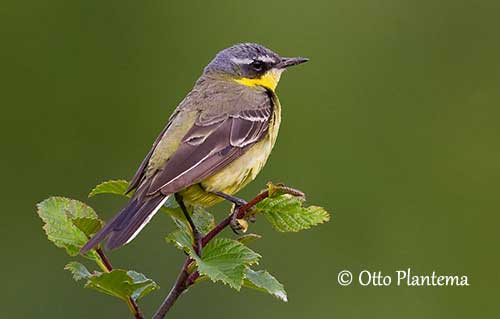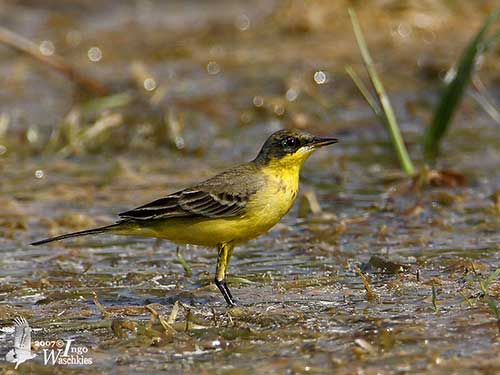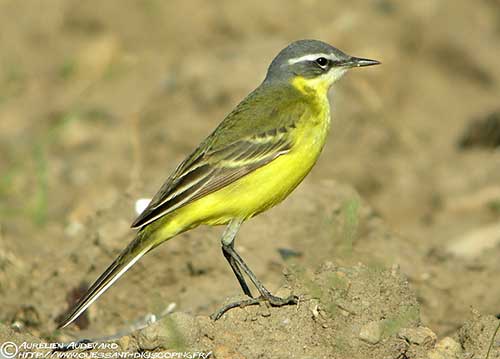
Fr: Bergeronnette de Béringie
Ang: Eastern Yellow Wagtail
All: Schafstelze-tschutschensis
Ita: Cutrettola orientale
Nd: Oostelijke Gele Kwikstaart
Sd: Grönkronad ärla
Photographers:
Aurélien Audevard
OUESSANT DIGISCOPING
Otto Plantema
Trips around the world
Ingo Waschkies
Bird Photography
Text by Nicole Bouglouan
Sources:
HANDBOOK OF THE BIRDS OF THE WORLD Vol 9 - by Josep del Hoyo - Andrew Elliot - David Christie - Lynx Edicions - ISBN: 8487334695
A Field Guide to the Birds of South-East Asia by Craig Robson. New Holland Publishers. ISBN: 9781780090498
What Bird-The ultimate Bird Guide (Mitchell Waite)
Wikipedia, the free encyclopaedia
South Dakota Birds and Birding – (Terry L. Sohl)
The Cornell Lab of Ornithology – Birds of North America
Alaska Species Ranking System Summary Report - Eastern Yellow Wagtail
Eastern Yellow Wagtail
Motacilla tschutschensis
Passeriformes Order – Motacillidae Family
INTRODUCTION:
The Eastern Yellow Wagtail was formerly a subspecies of the Western Yellow Wagtail (Motacilla flava). It is now considered a full species with four subspecies (tschutschensis, angarensis, taivana and micronyx), all former subspecies of M. flava too.
Although some authorities still maintain the classification of one Yellow Wagtail species, and in spite of unresolved taxonomic issues, the Eastern Yellow Wagtail is now treated as a species distinct from the Yellow Wagtail complex.
This species breeds in temperate Asia and in W Alaska. It migrates S after the breeding season, to S Asia and Australia.

DESCRIPTION OF THE BIRD:
Biometrics:
Length: 16-18 cm
The Eastern Yellow Wagtail is very similar to the Western Yellow Wagtail, but it has slightly paler grey forehead to nape, and mostly pale grey ear-coverts (sometimes blackish), blackish-grey lores and conspicuous white eyebrow. Crown and nape are bluish-grey. The upperparts are olive-green, usually brighter and greener than in M. flava.
The underparts are slightly paler yellow with brown spots on breast sides, but the bird shows rarely a necklace of darkish flecks on the white throat.
The wings are dark with two yellowish-white wingbars. The dark tail has two white outer rectrices.
The bill is greyish-black. The eyes are dark brown. Legs and feet are blackish.
The non-breeding male has duller head and paler underparts.
The female is variable and resembles female M. flava, but she has darker and greyer ear-coverts, or she is similar to the non-breeding male.
The 1st winter resembles female with greyer upperparts and whiter underparts.
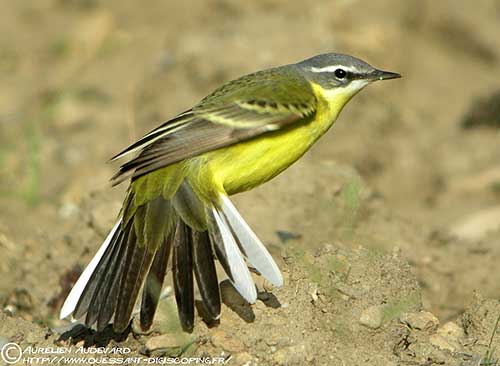
SUBSPECIES AND RANGE:
The Eastern Yellow Wagtail has four subspecies.
M.t. tschutschensis (described above) breeds in NE Siberia and N and W Alaska and NW Canada. It winters mainly in SE Asia, E to Philippines, and S to Indonesia.
M.t. taivana breeds in SE Siberia, Amurland, Sakhalin and N Japan (N Hokkaido). It winters in Myanmar, S China and Taiwan, S to Greater Sundaes, Philippines and Wallacea.
This race has long, broad, deep yellow supercilium, dark lores and ear-coverts, yellow throat, and dull greenish crown, nape and upperparts. The female is duller with greenish-brown ear-coverts and paler, narrower supercilium.
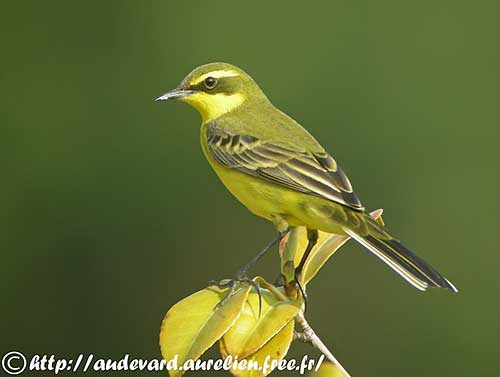
M.t. macronyx breeds in SE Transbaikalia E to Amurland and Ussuriland, S to NE Mongolia and C Manchuria. It winters in SE Asia, S to Malay Peninsula and SE China.
In this race, the male lacks the pale supercilium. It has deeper yellow underparts and brighter green upperparts. The wingbars are more conspicuous. The female is duller and lacks the supercilium too.
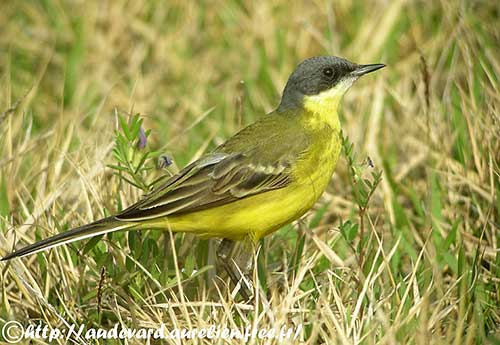
M.t. angarensis breeds in S Siberia and W Transbaikalia, S to N Mongolia. It winters in SE Asia (Myanmar and Thailand, E to SE China).
In this race, the male has dark slate-grey crown and loral stripe, blackish-grey ear-coverts and narrow white supercilium.
HABITAT:
The Eastern Yellow Wagtail breeds on tundra, usually in areas with low thickets of dwarf willows and birches in Alaska. It frequents the same type of habitat in the Old World where it can be seen in marshy areas and willow scrub on tundra.
In SE Asia, this species frequents various open habitats, usually near water. It occurs up to at least 1200 metres of elevation.
CALLS AND SONGS: SOUNDS BY XENO-CANTO
The Eastern Yellow Wagtail utters drier and harsher calls than M. Flava, “tsweep” or “tzreep”. The alarm call is described as “ple-ple-ple”. The song is a short trilling “chip-chip-chip” or a quiet “pee-weet, pee-weet” and it also produces fast, high “zri-zri-zri-zri-zri-zri”.
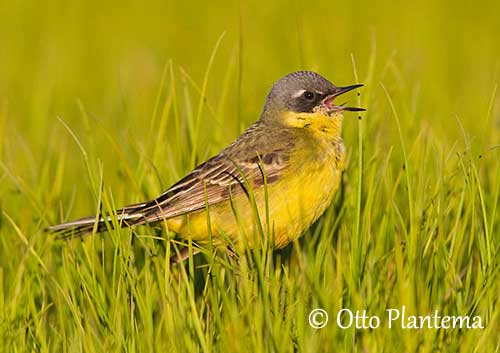
BEHAVIOUR IN THE WILD:
The Eastern Yellow Wagtail feeds primarily on insects including midges and other flies, beetles, aphids, ants and other species. It also takes spiders and some small snails, worms, berries and seeds.
It forages on the ground or along the edge of shallow water. It walks while picking up insects or other invertebrates, and performs quick dashes to catch active insect species. It also takes insects in flight or picks them from the vegetation while hovering.
During the breeding season, the male performs song flights to attract a female but also to defend the territory. It also displays on the ground, crouching with dropped wings and tail, and fluffed-out body feathers, while running around the female, or hovering above her with fanned tail, in order to display the white outer rectrices. They are monogamous.
If a predator approaches, several males gather, fly-up and circle the intruder.
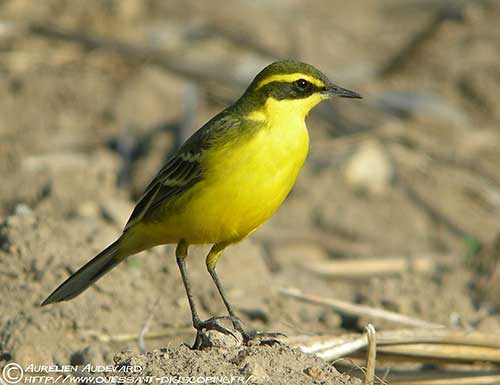
The Eastern Yellow Wagtail is migratory and moves S after breeding, travelling long-distances to reach S Asia and Australia in October. The return migration to N starts in February to April.
The flight is undulating with rapid, strong wingbeats interspersed with glides.
REPRODUCTION OF THIS SPECIES:
The Eastern Yellow Wagtail breeds during summer. The nest is built on the ground, well-hidden under low vegetation, shrub or overhanging grass. The cup-shaped nest is made with leaves, weeds, moss and lichens. The inner cup is lined with feathers or animal hair. It is probably built by the female.
She lays 3-6 (usually 4-5) whitish/buff eggs with heavy brown dotting. The incubation lasts 11-13 days shared by both adults, but mainly done by the female. The chicks are fed by their parents, and leave the nest 10-13 days after hatching, and they are able to fly 3-6 days later.
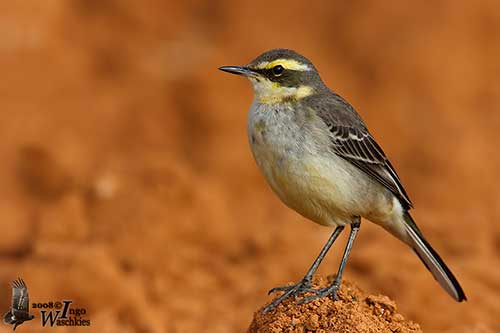
PROTECTION / THREATS / STATUS:
The population of the Eastern Yellow Wagtail is suspected to be declining, but this species is still found over a wide range where it is relatively common to locally common. There is little or no information on population status.
